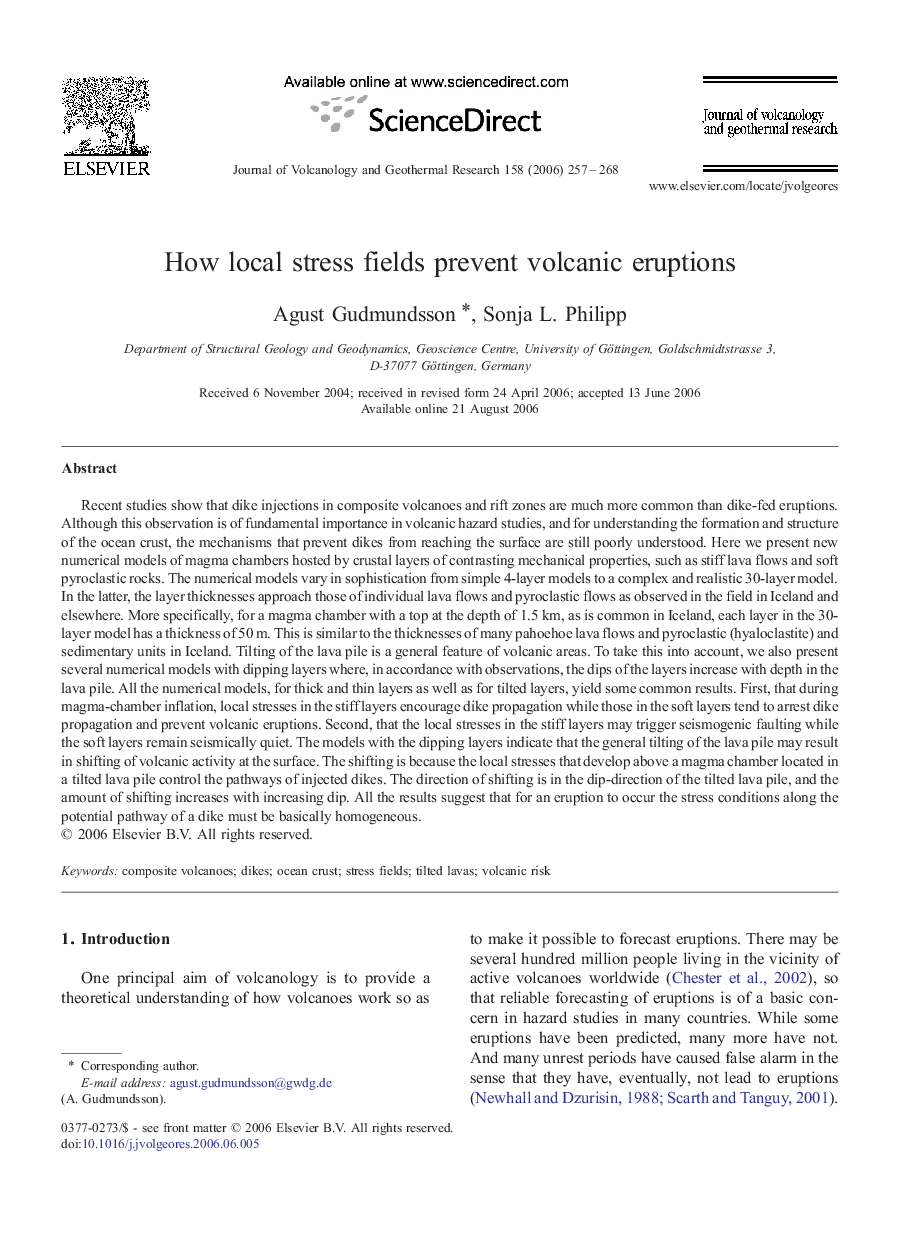| Article ID | Journal | Published Year | Pages | File Type |
|---|---|---|---|---|
| 4715004 | Journal of Volcanology and Geothermal Research | 2006 | 12 Pages |
Recent studies show that dike injections in composite volcanoes and rift zones are much more common than dike-fed eruptions. Although this observation is of fundamental importance in volcanic hazard studies, and for understanding the formation and structure of the ocean crust, the mechanisms that prevent dikes from reaching the surface are still poorly understood. Here we present new numerical models of magma chambers hosted by crustal layers of contrasting mechanical properties, such as stiff lava flows and soft pyroclastic rocks. The numerical models vary in sophistication from simple 4-layer models to a complex and realistic 30-layer model. In the latter, the layer thicknesses approach those of individual lava flows and pyroclastic flows as observed in the field in Iceland and elsewhere. More specifically, for a magma chamber with a top at the depth of 1.5 km, as is common in Iceland, each layer in the 30-layer model has a thickness of 50 m. This is similar to the thicknesses of many pahoehoe lava flows and pyroclastic (hyaloclastite) and sedimentary units in Iceland. Tilting of the lava pile is a general feature of volcanic areas. To take this into account, we also present several numerical models with dipping layers where, in accordance with observations, the dips of the layers increase with depth in the lava pile. All the numerical models, for thick and thin layers as well as for tilted layers, yield some common results. First, that during magma-chamber inflation, local stresses in the stiff layers encourage dike propagation while those in the soft layers tend to arrest dike propagation and prevent volcanic eruptions. Second, that the local stresses in the stiff layers may trigger seismogenic faulting while the soft layers remain seismically quiet. The models with the dipping layers indicate that the general tilting of the lava pile may result in shifting of volcanic activity at the surface. The shifting is because the local stresses that develop above a magma chamber located in a tilted lava pile control the pathways of injected dikes. The direction of shifting is in the dip-direction of the tilted lava pile, and the amount of shifting increases with increasing dip. All the results suggest that for an eruption to occur the stress conditions along the potential pathway of a dike must be basically homogeneous.
